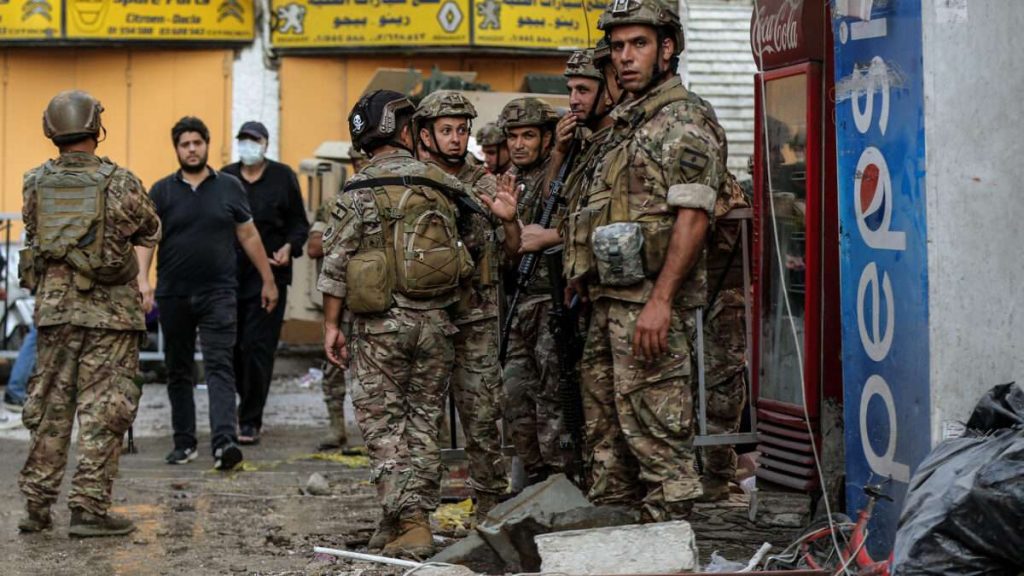It’s a story that has happened before in the Middle East: an army with American weapons shot at another army with American weapons. Sometimes it’s an intentional ploy; during the war between Iran and Iraq, the Reagan administration armed both sides, leading to the Iran-Contra scandal. And sometimes it’s an unintended consequence, like the Syrian rebel infighting that led to the infamous headline, “In Syria, militias armed by the Pentagon fight those armed by the CIA.”
The fighting between the U.S.-funded army of Israel and the U.S.-funded army of Lebanon seems to be another such consequence of U.S. policy. When the Lebanese militia Hezbollah and Israel began fighting last year, the Lebanese government tried its best to stay out of the fray. It reportedly even pulled troops away from the border when Israel announced a ground invasion and ordered Lebanese citizens to evacuate north of the Awali River. But on Thursday, the Lebanese army announced that it had, in fact, been sucked into the conflict.
“One of the soldiers was martyred as a result of the Israeli enemy targeting an army center in the area of Bint Jbeil South, and the center’s personnel have responded to the source of fire,” the army stated on social media. An official in Lebanon told Agence France-Presse that it was the first time the Lebanese army fired on Israeli forces throughout the war.
Two hours before, the Lebanese army had announced that one of its soldiers was killed by Israeli fire while “carrying out an evacuation and rescue mission alongside the Lebanese Red Cross in the town of Taybeh-Marjayoun,” down the road from Odaisseh, a town that several Israeli troops were killed trying to enter on Wednesday morning. The Red Cross said that four of its paramedics were injured, and the Israeli army said that it would be investigating the incident.
American taxpayers have helped arm and train both the armies that are now apparently shooting at each other—and the U.S. funding was designed to prevent exactly this outcome. Israel received $124 billion in U.S. aid from 1949 to 2023, and at least $6.5 billion over the past year. The United States has also provided around $3 billion in military aid to Lebanon since 2006, including around $2 billion in weapons. Last year, the Biden administration began paying the salaries of Lebanese soldiers and police directly.
Congress sends Lebanon this aid on the condition that it will be used to “professionalize the [Lebanese Armed Forces] to mitigate internal and external threats from non-state actors, including Hizballah [sic]” and “implement United Nations Security Council Resolution 1701,” which was passed after the past Israeli-Lebanese war in 2006, and calls on Hezbollah to disarm.
However, Hezbollah has refused to lay down its weapons, claiming that Israel still occupies Lebanese land in the disputed Shebaa Farms. After Hamas’ October 7 attacks on Israel last year, Hezbollah began firing on the Shebaa Farms, which escalated to Israel and Hezbollah bombarding each other’s border cities, forcing tens of thousands of people on both sides of the border to flee. Last week, Israeli Prime Minister Benjamin Netanyahu told the U.N. that he would fight for “total victory” in order to “return our citizens to their home safely.”
Biden administration officials have encouraged Israel’s strategy of “de-escalation through escalation,” and are privately pitching the war as an opportunity to “reshape the Middle East for the better for years to come,” according to Politico.
But President Joe Biden is publicly calling for the war to end. “We should have a ceasefire now,” he told reporters on Monday. Asked whether he is comfortable with Israel launching a ground invasion of Lebanon, the president said that he is “comfortable with them stopping.” If only he had some leverage over the two sides.
The post U.S.-Funded Armies Fight Each Other In Lebanon appeared first on Reason.com.






